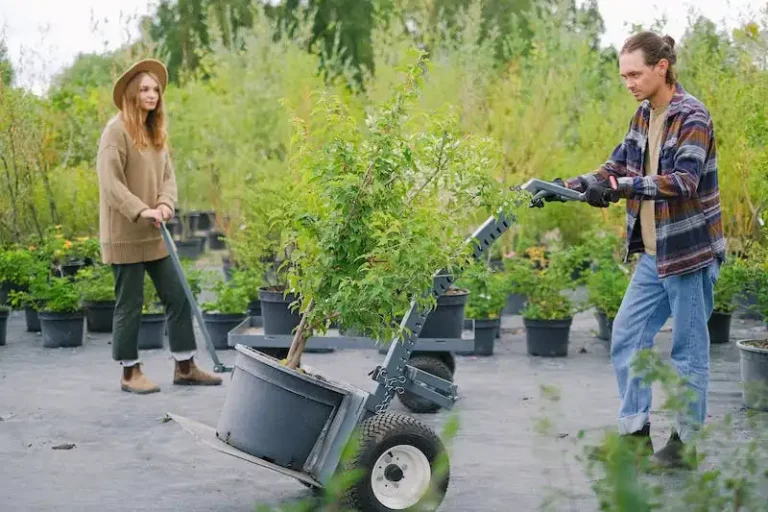The 403 error is one of the most common HTTP status codes that users encounter while browsing the web. It is an error message that is displayed when the user tries to access a webpage or resource that they are not authorized to view. This error can be frustrating for users, as it prevents them from accessing the content they want.
So, what exactly does the 403 error mean? The number 403 refers to the HTTP status code that is sent from the web server to the user’s browser. It indicates that the server understood the request made by the user, but is refusing to fulfill it. This can happen for a variety of reasons, such as if the user does not have the proper credentials to access the resource, or if the server is configured to block certain types of requests.
While the 403 error can be frustrating, it is important to remember that it is there for a reason. It is a security measure designed to protect both the user and the website. It prevents unauthorized access to sensitive information and helps to keep the user’s data safe. If you encounter a 403 error, it is a good idea to double-check the URL you are trying to access and make sure you have the necessary permissions to view the content.
If you are a website owner and are experiencing issues with the 403 error, there are a few things you can do to troubleshoot the problem. First, check your server logs to see if there are any specific error messages or codes that can help pinpoint the issue. Additionally, you can check your website’s access control configuration to make sure it is correctly set up. If you are unsure about how to resolve the issue, it is always a good idea to reach out to your web hosting provider for assistance.
In conclusion, the 403 error is a common and important part of web browsing. While it can be frustrating, it is there for a reason and serves as a security measure. By understanding what the 403 error is and how to troubleshoot it, users and website owners can navigate the web more effectively and securely.
Grow ‘Honesty’ From Seed
Grow ‘Honesty’ is a warm-season annual plant that is native to the state of Virginia. This plant is generally grown for its attractive bright silver leaves and delicate flowers. ‘Honesty’ is also known as Lunaria annua and is a favorite among kids.
‘Honesty’ seeds are easy to grow and establish in the garden. They are usually planted in September, either directly in the ground or onto seed trays. To ensure successful germination, it’s important to keep the soil moisture level consistent and provide the seeds with light.
When growing ‘Honesty’ from seed, it’s essential to provide the right conditions. The plant prefers a well-drained soil with a good level of organic matter. It is also important to ensure that the plant receives full sun or partial shade.
‘Honesty’ plants are usually trouble-free, but if any issues arise, there are some troubleshooting tips to follow. If the leaves show signs of yellowing or browning, it may be due to overwatering or underwatering. Adjust the watering accordingly.
If the plants are not growing as expected, it could be an indication of nutrient deficiency. Consider fertilizing the soil with a balanced fertilizer to provide the necessary nutrients for growth.
In summary, growing ‘Honesty’ from seed is an easy and rewarding process. With the right conditions and ongoing care, you can enjoy these attractive plants in your garden for many years to come. Whether you’re a novice gardener or an experienced horticulturist, ‘Honesty’ is a great plant to add to your collection.
For more information and detailed cultivation guides, there are many good references available. Horticulture magazines and online gardening websites are great sources of information. They provide comprehensive overviews, step-by-step guides, and tips to ensure successful ‘Honesty’ growing.
How To Grow Honesty From Seed
Growing honesty from seed can be a rewarding and attractive addition to any garden. Back in the days, they were frequently grown because of their beautiful silvery pods that add interest to the garden landscape. Aside from being visually appealing, they are also easy to establish and care for.
Honesty is an annual or biennial plant and is a member of the Brassicaceae family. It is also known as ‘Lunaria annua’ or ‘Silver Dollar plant’. The plant prefers a warm and humid climate, and it thrives best in full sunlight. So, if you want to grow honesty, make sure to choose a spot in your garden where it can get enough sunlight throughout the day.
The cultivation of honesty starts with planting the seeds. You can sow the seeds directly into the soil in the spring or fall. Before planting, prepare the soil by removing any weeds and loosening it with a garden fork. Then, sow the seeds about half an inch deep and a few inches apart.
Honesty plants need well-draining soil to prevent any potential diseases or pests. It is also important to water them regularly, especially during dry periods. When the plants reach a height of around 6 inches, thin them out to provide enough space for growth.
After a few weeks, the plants will start to develop leaves and grow taller. It takes about two years for honesty to fully mature and produce its signature silvery pods. The pods can be harvested in late summer or early fall when they have turned completely brown or black on the outer side. To harvest the pods, simply cut the stem below the pods and store them in a dry and cool place.
Honesty is a relatively low-maintenance plant, but there are still some caring tips worth considering. While it generally doesn’t require much attention, you should keep an eye out for any signs of diseases or pests. If needed, treat them using appropriate methods or consult a gardening expert for guidance.
In conclusion, growing honesty from seed is a great way to add beauty and interest to your garden. With proper planting and care, you can enjoy the attractive silvery pods produced by the plant. Just make sure to provide enough sunlight, water, and a well-draining soil. Happy gardening!
References:
- Maggie’s Garden Blog
- “Honesty (Lunaria annua) – How to Grow and Care for the Silver Dollar Plant”
403 ERROR
403 ERROR is a type of HTTP status code that indicates that the client does not have the necessary permissions to access the requested resource on a website. It is usually encountered when trying to access a web page or perform an action that requires authentication or authorization.
Having a 403 ERROR is not uncommon, and it is something that website administrators need to be mindful of. It is important to care for and keep an overview of the error, considering how it can impact user experience and the reputation of the website.
There are several reasons why a 403 ERROR may occur. It could be due to incorrect permissions set on the server, a misconfiguration in the website’s .htaccess file, or a problem with the user’s account or credentials. Additionally, 403 ERRORs can also be caused by site-wide issues like server maintenance or security measures.
When encountering a 403 ERROR, there are a few things you can try to resolve the issue. First, make sure that you have entered the correct URL and that it is spelled correctly. It is also important to check if you are logged in with the necessary credentials or if you have the required permissions to access the resource.
If you are the website administrator, you can check the server logs for more information about the error. These logs will usually provide details about the error, including the specific file or directory that is causing the issue.
Another approach to fixing a 403 ERROR is to clear your browser cache and cookies. Sometimes, outdated or corrupted cache files can interfere with the authentication process and cause the error to occur.
In conclusion, a 403 ERROR is an error code that indicates a lack of permission to access a certain resource on a website. It is important to mind the error and take the necessary care to resolve it promptly to provide a smooth user experience.
Blog
Each September, it’s time for the annual silvery show in my gardens. The star of the show is the perennial plant called ‘honesty’ (Lunaria annua). But even though the name suggests honesty, it can sometimes cause trouble for gardeners.
One common question I get from readers is, “Why aren’t my honesty plants growing?” The answer is usually simple: They are biennials, meaning they grow leaves the first year and flower the second year. So if you planted your honesty seeds this year, you won’t see any flowers until next year.
But that doesn’t mean you can’t enjoy the plant in its first year. The silvery seedpods that form after the flowers fade in late spring are very attractive and can be used in dried flower arrangements. And don’t worry about storing the seedpods for next year; honesty is usually a very prolific self-seeder, so you’ll likely have plenty of seedlings springing up on their own.
If you have kids, they’ll love watching the seedpods develop. You can even open them up to reveal the shiny, round seeds inside, which look like silver dollars. It’s a great way to introduce them to the wonders of nature.
But what about fertilizer? Honesty doesn’t need much. It’s a tough plant that can grow in poor, dry soil. Just make sure to water it regularly, especially during dry spells. And you may need to water more frequently if you’re growing it in a container or a location with a lot of sun and wind.
As for pests, honesty is generally trouble-free. The silver leaves seem to repel many common insect pests, and I’ve never had any problems with diseases. However, if you notice any yellowing or wilting leaves, it may be a sign of a nutrient deficiency or overwatering. In that case, a little extra care may be needed.
When it comes to harvesting honesty, it’s best to wait until the seedpods turn brown and start to split open on their own. Then, simply cut the stalks and hang them upside down in a warm, dry place to dry. Once the pods have dried completely, you can collect the seeds and store them for planting next spring.
If you’re new to gardening and want an overview of how to grow honesty, here are the basics: Plant the seeds in early spring, after the last frost. Choose a sunny location with well-drained soil. Sow the seeds directly into the ground or into containers, about 1/4 inch deep. Keep the soil moist until the seeds germinate, usually within two weeks.
Once the seedlings emerge, thin them out to give each plant enough room to grow. The seedlings can be transplanted if desired, but honesty is known for its ability to establish itself in the ground. So if you’re not sure where to plant it, just let it grow where it pops up.
In my Virginia garden, honesty usually starts blooming in March and continues to flower until May. The tall stalks with their clusters of purple flowers are a beautiful sight, and they attract bees, butterflies, and other pollinators. After the flowers fade, the silvery seedpods take their place, shining brightly in the sunlight.
If you’re looking for an easy-to-grow wildflower that adds a touch of silver to your garden, give honesty a try. It’s a low-maintenance plant that brings beauty and interest to the garden year after year.



